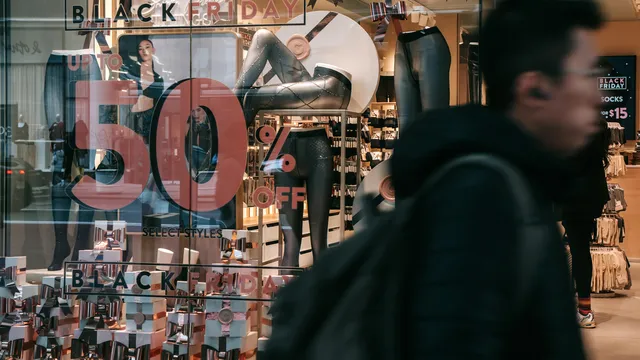The retail and e-commerce sectors offer significant opportunities for entrepreneurship, despite global economic changes and geopolitical uncertainty. For those who can be innovative and respond to changing market needs, the outlook remains full of potential, according to the Miami Herald.
Although challenges such as inflation and increasing competition continue, some of the fastest-growing companies in retail and e-commerce are showing resilience by offering consumers greater convenience, affordable prices, and personalized experiences. Combined with emerging trends, there are many opportunities, especially for companies that are capitalizing on growing sectors such as wellness and sustainable products.
1. K-Beauty, J-Beauty, and other Asian beauty products
Over the past decade, Korean and Japanese beauty trends in the US have gained immense popularity. In 2024, Korean cosmetic products alone will rank first in the US cosmetics import market share (overtaking French brands Chanel and Lancome for the first time) with 22% of the market and a value of $1.4 billion. Consumers are looking for new skin care products, gentle ingredients, and innovative packaging, and Korea and Japan are ready to provide them.
Entrepreneurs in the cosmetics industry can take advantage of this market by creating a line of Asian cosmetic products in a subscription package, online store, or pop-up shop. Another opportunity for entrepreneurs is to offer cosmetic services with a personal shopping assistant and recommendations, or to partner with brands or distributors to offer products directly to consumers.
2. Secondhand and vintage resellers
The global secondhand clothing market is projected to reach $350 billion by 2028, thanks to concerns about sustainability, economic challenges, and a love for unique items. Online platforms such as ThredUp, Depop, and Poshmark are thriving in the resale of second-hand clothing. But our desire to avoid throwing lightly used products in the trash doesn't stop with clothing. Niche resellers of vintage and secondhand furniture (such as Chairish), used sporting goods (such as SidelineSwap), and musical instruments (Elderly.com) are also growing. This larger market outside of clothing could be worth $64 billion by 2032.
3. Social commerce
Social commerce refers to a shift in retail channels, not a shift in a subset of goods and services. And this new way of shopping—integrated online shopping on your favorite social media platform—is expected to exceed $100 billion in 2025 (a 22% increase over last year). This trend opens up opportunities for businesses to reach customers through engaging social content, shoppable posts, and partnerships with influencers.
Business owners can use social commerce to build a more direct relationship with their audience and drive highly interactive and visually appealing sales.
4. Live shopping and interactive commerce
Live shopping is not new. Consumers have been shopping on television since the 1980s. But it is getting a new lease on life thanks to social commerce and modern live shows on e-commerce platforms. Although live shopping has not caught on in the US at the same pace as Alibaba's Taobao in China, it is gaining momentum with TikTok Shop sales growing 26% in 2024 to nearly $72 billion.
If you want to sell your goods in a new (old) way, add live shopping events to your retail strategy.
5. The growing pet industry
Due to the growing number of pet owners, their excessive desire to pamper their pets, and their willingness to spend more, Americans spent over $147 billion on their pets in 2023, and that figure continues to grow.
Changing shopping habits, especially among Millennials and Gen Z, have led to increased spending on expensive pet goods and services, as well as health and wellness products. For entrepreneurs focused on pets, this is a golden opportunity. Take advantage of the growing demand for high-quality pet food and treats, especially if they have added value such as being organic, grain-free, or for special diets. There is still demand for unique pet clothing, toys, and care products at affordable prices.
6. More work for more workers
With inflation and job insecurity driving 38% of workers to seek freelance work, small businesses can take advantage of this rich and educated workforce by outsourcing specialized tasks such as marketing, customer service, and web development to freelancers.
7. Personalized nutrition and functional foods
Products such as gut-friendly kombucha, probiotic snacks, and nutrient-rich smoothie kits are becoming increasingly popular among people who want to eat well and stay healthy.
Small business owners in the US are expanding the functional food market city by city and neighborhood by neighborhood. A subset of this trend is personalized nutrition (also called precision nutrition), which tailors diets to a customer's unique health goals.
This can mean personalized meal plans tailored to individual needs, nutritional supplements, or products for specific conditions such as diabetes or low energy.
Personalized meals, such as salads or build-your-own meals, allow customers to tailor their breakfast, lunch, or dinner to their specific dietary needs, whether it's a high-protein, low-glycemic diet, etc.
According to a panel organized by the Specialty Food Association (SFA), other opportunities for food companies include personalized snacks, artificial intelligence-based meal apps, and new foods and flavors with targeted health benefits. | BGNES

 Breaking news
Breaking news
 Europe
Europe
 Bulgaria
Bulgaria







